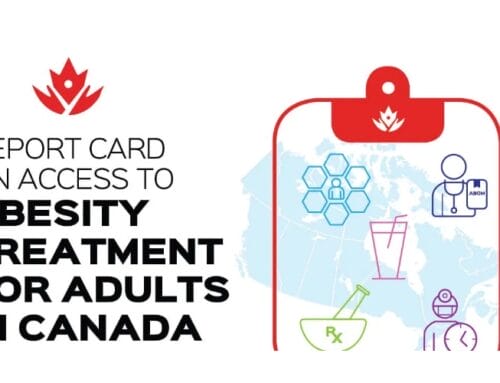Today’s post comes from Megan Lamb and Darcie Valois. Megan and Darcie both completed graduate studies in psychology at Carleton University. Darcie is a recent MA grad and Megan is currently a PhD student.
It’s time to come clean: many of us are guilty of letting a few of these phrases fall carelessly from our mouths from time to time. Whether it is a discussion with friends, or a conversation with yourself, negative self-talk and appearance comparisons are often present in our day-to-day lives. However, many people are unaware of the devastating impact these phrases and comparisons can have on the well-being of ourselves, and those around us.
Today, the majority of youth report being unhappy with their appearance or weight. Research suggests that children begin reporting body dissatisfaction between the ages of six and nine, which increases into middle and high school years, and may continue throughout life. These statistics are alarming, as research has shown that body dissatisfaction is associated with many negative outcomes such as lower self-esteem, disordered eating behaviours, increased symptoms of depression, substance abuse, and peer teasing. Given this, it is critical that parents, educators, and professionals aware of factors that can impact body image development in youth and demonstrate positive body image to aid in the healthy development of children. Here, I will first discuss why body image is important, then reflect on some things that influence body image development and provide tools to improve body image.
What is positive body image and why is it important for youth?
Body image is an individual’s mental representation of his or her own body, such as how you picture your body in your mind, or what you see when you look in the mirror. People who have a positive body image value their bodies not just for its physical appearance, but have genuine appreciation for its physical capabilities.
Positive body image is important for youth mental and physical health. Youth with positive body image report better physical and mental health outcomes such as less disordered eating, more healthy attitudes toward food and eating, increased self-esteem, higher engagement in physical activity, attenuated weight gain and increased quality of life. In addition, they are better able to resist pressures to conform to societies beauty standards. The benefits of being body confident transfer into many facets of life, and will allow youth to become happier and healthier adults.
The most reported factors for poor body image development include:
Media: The average teen is exposed to 5,000 media messages a day that tell them how they should look, act, and feel. This is troublesome because these messages tell girls that they should be thin but curvy, while boys should be tall and muscular. Media messages not only suggest that all people should be similar shapes and sizes, but also indicates that this ideal body is easily attainable through diet and exercise. Unfortunately, this can take a toll on how people feel about their bodies and appearance, leading to feelings of inadequacy when they cannot achieve this body ideal.
Teasing: being victimized by peers or family can negatively impact self-esteem in youth, and further impact body image especially if the teasing is related to weight or appearance.
Mental health: youth who have more symptoms of depression and anxiety are at greater risk for body dissatisfaction
Puberty: timing of development can have either a positive or negative impact on body image. Girls who mature earlier than their peers, and boys who mature later than their peers tend to experience the most body dissatisfaction, which may be a consequence of their bodies not conforming with those idealized in the media (think: thin women and tall, muscular men). For instance, early maturing girls often experience weight gain, and tend to develop breasts and hips before their peers, leading to insecurity about their newfound bodies. Late maturing boys tend to feel insecure because they are late to grow taller and develop muscles, which are idealized body characteristics for men.
Family and friends: having family and friends who are preoccupied with their own diet, weight, and appearance can have a negative impact on youth’s body image development. Youth who are exposed to frequent weight and diet related talk are more likely to internalize these negative messages, and begin to relate their appearance to their self-worth.
Weight: in non-clinical samples of youth, research suggests that youth living at higher weights are at a greater risk for body dissatisfaction. This association seems to be exacerbated by media exposure, family weight talk/preoccupation, and peer teasing. Although all youth are at risk for poor body image, it is possible that youth living at higher weights have a higher likelihood of being impacted by risk factors for negative body image. Therefore, it is important to provide youth with tools to combat negative body image.
Note: trying to alter your appearance or body may be a counter intuitive way to improve body image. Instead, it is better to improve your thoughts and feelings about your body, and treat your body well. Here are some tools to help you practice body love and acceptance:
- Focus on your skills, talents, and whole-self to determine your self-worth, not your appearance or weight.
- Say positive things to yourself everyday: it is important to acknowledge all the wonderful things about yourself to boost your mood and reinforce your self-worth
- Surround yourself with body positive people: surround yourself with people who feel good about their body, who don’t judge based on appearance, and who don’t make you question your own body confidence.
- Remind yourself of all the things your body CAN do: when we get caught up in looking a certain way, we often forget about all the things our body does for us. Make sure to remind yourself that your body helps you get places, allows you to learn, and participate in activities that make you happy.
- Banish negative self/weight related talk: negative weight/body talk is common among adolescents, especially girls. Try to avoid say things like “this makes me look fat” or “I need to diet.” These types of messages are not only harmful to you but also those around you.
- Don’t compare yourself to others: Theodore Roosevelt said it best, “comparison is the thief of joy.” Remember that the things that make you unique are the most interesting parts of a person, and these things should be celebrated not criticized.
- Use your media literacy skills: practice looking at the media through a critical lens – people in the media often represent unrealistic images that are unattainable for the average person.
- Take care of your body: treat your body with respect and care. Make sure you move regularly, practice balanced eating, good hygiene, and spend time in nature
- Smile more: research demonstrates that smiling can boost your mood. In addition, smiling at someone is a good way to brighten someone else’s day.
References
Carlson Jones, D. (2004). Body Image Among Adolescent Girls and Boys: A Longitudinal Study. Developmental Psychology, 40(5), 823-835. doi: https://dx.doi.org/10.1037/0012-1649.40.5.823
Cash, T.F., & Smolak, L. (Eds.). (2011). Body Image: A Handbook of Science, Practice, and Prevention (2nd edition). New York: Guilford Press.
Johnson, S. (2014). New research sheds light on ad exposures. Retrieved from: https://sjinsights.net/2014/09/29/new-research-sheds-light-on-daily-ad-exposures/
Lawler, M & Nixon, E. (2011). Body dissatisfaction among adolescent boys and girls: The effects of body mass, peer appearance culture and internalization of appearance ideals. Journal of youth and adolescence, 40, 59-71. doi: 10.1007/s10964-009-9500-2.
O’Dea, J. A. (2005). School‐based health education strategies for the improvement of body image and prevention of eating problems: An overview of safe and successful interventions. Health Education, 105 (1), 11-33. doi: https://doi.org/10.1108/09654280510572277
Ohring, R., Graber, J. A. and Brooks-Gunn, J. (2002), Girls’ recurrent and concurrent body dissatisfaction: Correlates and consequences over 8 years. Int. J. Eat. Disord., 31: 404–415. doi:10.1002/eat.10049
Neumark-Sztainer D, Story M, Hannan PJ, Perry CL, Irving LM. Weight-Related Concerns and Behaviors Among Overweight and Nonoverweight AdolescentsImplications for Preventing Weight-Related Disorders. Arch Pediatr Adolesc Med. 2002;156(2):171–178. doi:10.1001/archpedi.156.2.171
Thompson, J. K., Coovert, M. D., Richards, K. J., Johnson, S. and Cattarin, J. (1995). Development of body image, eating disturbance, and general psychological functioning in female adolescents: Covariance structure modeling and longitudinal investigations. Int. J. Eat. Disord., 18, 221–236. doi:10.1002/1098-108X(199511)18:3<221::AID-EAT2260180304>3.0.CO;2-D









